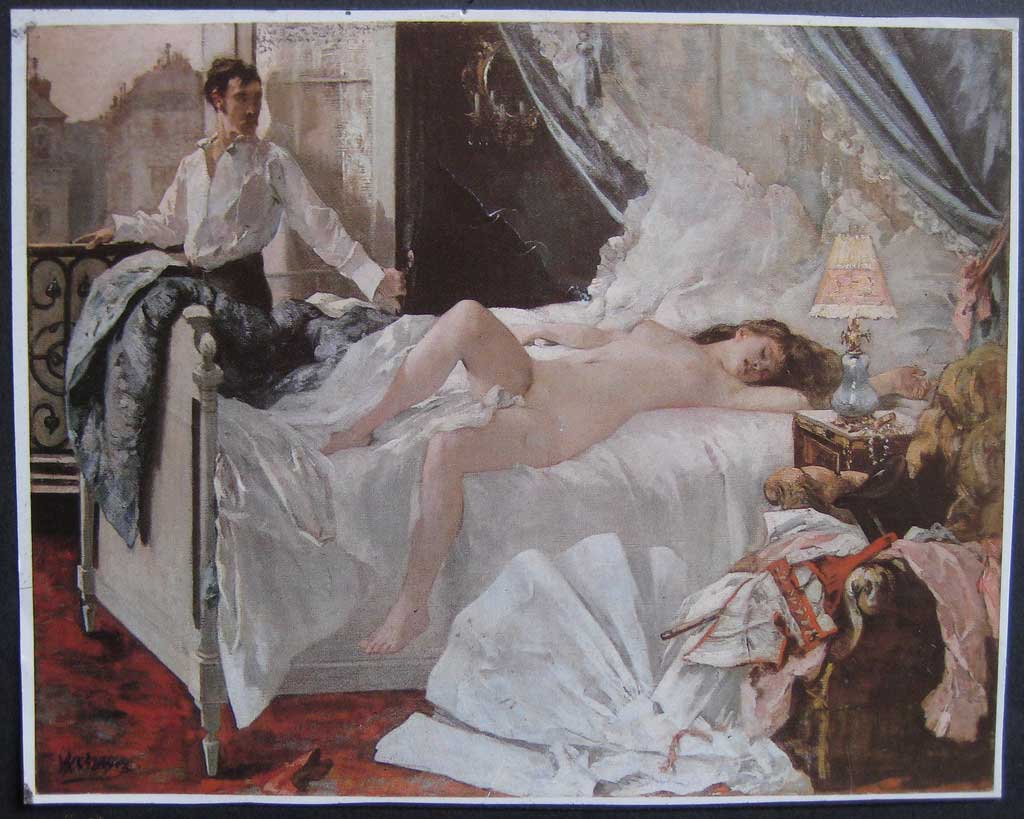

 |


 |
|
The history of Rolla was captured in a poem by Musset in 1833. Rolla was the man who had paid for Marion as a courtesan whom he couldn't really afford. " . . .Marion was expensive. To pay for one night he had spent everything . . .. Rolla peered with a melancholy eye over the rooftops, he saw the sun coming up. He moved to the edge of the window. Rolla glanced back to Marie, she was tired and had fallen asleep again ..." Gervex had painted the poem. But just like Manet's Olympia this was way too direct, and forced Parisian society to face the realities of prostitution which was widespread in Paris, along with the issues of female sexuality. The ruffled sheets, the quickly discarded corset and man's top hat, left little doubt the passion that this painting depicted. (Musée des Beaux-Arts de Bordeaux ) Some courtesans became
quite wealthy,
even celebrities in Paris as prostitution was common at all
levels.
Everyone knew it, but no one of society would dare discuss it. Clearly,
Gervex is romanticizing the poem here. But there was another side to
this
story. Most woman of In 1878, Gervex submitted three paintings to the Salon: Portrait d'E. Paz, Portrait of Madame G. (Madame Gervex mère), and this painting of Rolla. The last was refused because it was deemed indecent. The artist turned around and showed the painting in the window of a furniture store at 41 rue de la Chaussée d'Antin for three months (April 20th thru July 20th). It attracted crowds of Parisians and was so scandalous that it would make Gervex famous. Note: Beth Archer Brombert; Edouard
Manet : rebel in a frock coat; Boston : Little, Brown, 1996. xxii,
505 p. : ill. ; 24 cm. ISBN: 0316109479
|

By: Natasha
Wallace
Copyright 1998-2008 all rights
reserved
Created 4/25/2001
Updated 9/6/2008